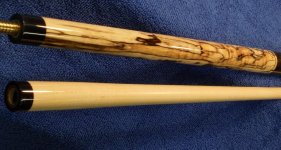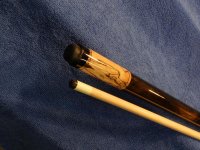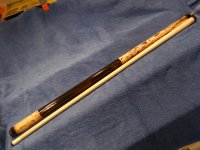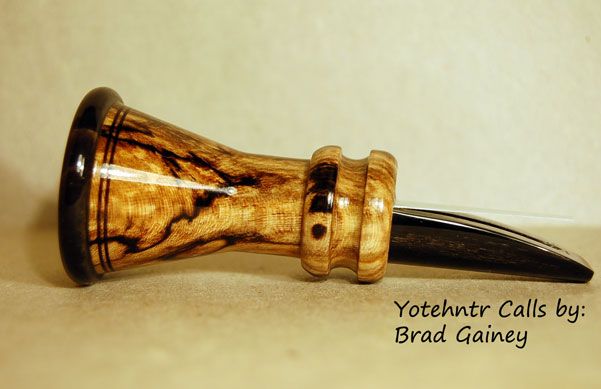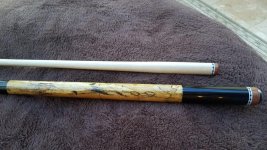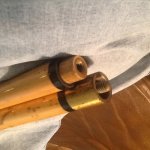RedBowTies88
Registered
Sorry to bring back a long dead zombie thread, but here goes:
A few months ago at the billiards expo in valley forge, I came across a nothing-less-than gorgeous spalted maple cue from McDermott. It appeared to be a once piece spalted maple butt with a white wrap and it just looked amazing.
They sell "blemished" McDermott cues there for a killer price, but this one was perfect. Apparently it was a custom ordered cue where the purchaser failed to pay the balance (or something like that) so it ended up on the clearance rack at the show. Unfortunately I had already blown my load on a new Meucci shaft (I know I know, please hold the laughter) and couldn't afford the cue or I would of bought it right then and there.
After I got home, I looked around on their website and saw they they indeed offer it as an option in their custom section. Prices for those seem fairly reasonable and I thought that maybe sometime this year I would order one since I liked it so much.
Therefore this thread has me fairly disheartened. I thought McDermott was a reputable outfit, even though they're not exactly custom cue builders. I'm surprised to learn that if spalted maple is indeed such a poor choice that they would even offer it.
I wonder if maybe they put it though some type of treatment? Or something to mitigate the "rotten" aspect of it. I suppose I could give them a ring and ask, but also perhaps someone here could tell me also.
Thanks,
Beech.
A few months ago at the billiards expo in valley forge, I came across a nothing-less-than gorgeous spalted maple cue from McDermott. It appeared to be a once piece spalted maple butt with a white wrap and it just looked amazing.
They sell "blemished" McDermott cues there for a killer price, but this one was perfect. Apparently it was a custom ordered cue where the purchaser failed to pay the balance (or something like that) so it ended up on the clearance rack at the show. Unfortunately I had already blown my load on a new Meucci shaft (I know I know, please hold the laughter) and couldn't afford the cue or I would of bought it right then and there.
After I got home, I looked around on their website and saw they they indeed offer it as an option in their custom section. Prices for those seem fairly reasonable and I thought that maybe sometime this year I would order one since I liked it so much.
Therefore this thread has me fairly disheartened. I thought McDermott was a reputable outfit, even though they're not exactly custom cue builders. I'm surprised to learn that if spalted maple is indeed such a poor choice that they would even offer it.
I wonder if maybe they put it though some type of treatment? Or something to mitigate the "rotten" aspect of it. I suppose I could give them a ring and ask, but also perhaps someone here could tell me also.
Thanks,
Beech.
